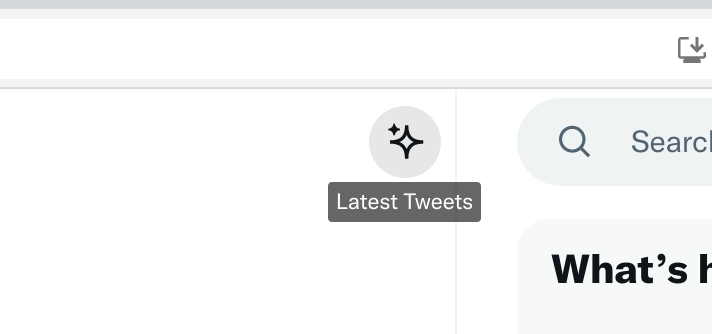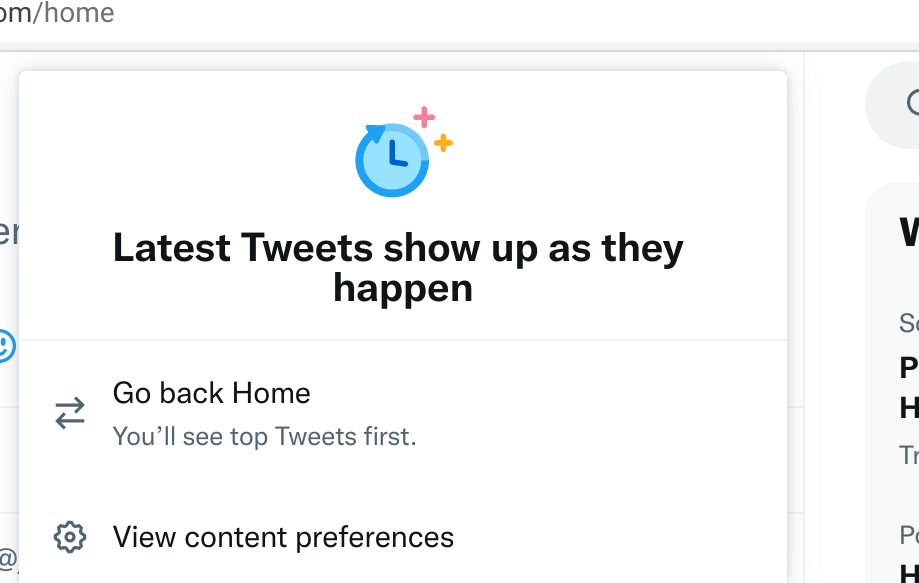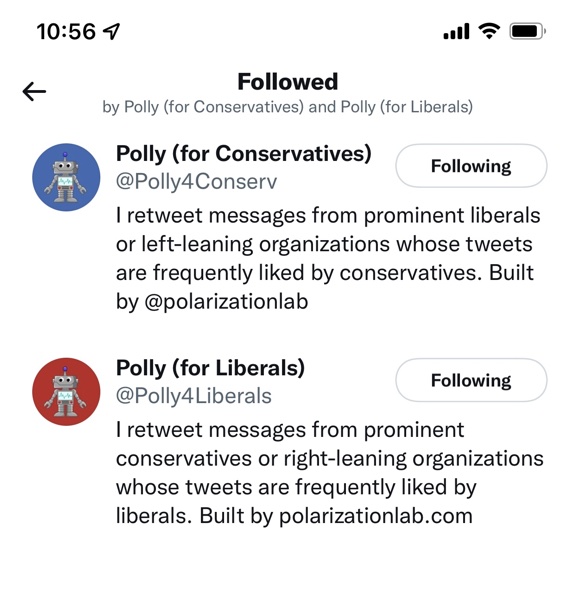We are now in the heat of election season and social media sources are constantly feeding us ads attempting to encourage our vote for one candidate or another. In general, I don’t find short-form ads very useful. There is a statement intended to impact me in some way or another and little in the way of justification or evidence. Twitter must fall into this approach because of the length of messages that are allowed.
I think political season offers a great opportunity to explore social media and consider how the algorithms and our own choices may mislead us. I have two explorations to suggest.
Twitter with and without the algorithm
The default in Twitter makes use of an algorithm to prioritize what we see in our feed. In other words, the algorithm decides what will appear at the top of the feed and content assumed to be less interesting based on our past behavior will appear further down as we scroll.
It turns out we can turn this algorithm off and if we decide to do so the content in the feed will be arranged chronologically. In other words, the feed is arranged based on when our friends generated tweets.
It is interesting to compare these feeds. Here is how.
At the top of the Twitter display, you should see what I describe as stars. If you hover over this icon you will see your current setting. In the image below, you can see I have my feed set to the chronological option.

If you click on the “star” icon, you will find a way to activate the other display option. In this case, it would be the algorithmically driven alternative. Toggling back and forth gives you a feel for how you have been categorized by the algorithm.

What are the other folks posting to Twitter.
The Polarization Lab at Duke University has been investigating how social media exposure increases or decreases existing political extremism. I review some of the tools they make available and some of the research they have conducted in an earlier post.
One of their more interesting experiments involves the use of bots they have created to forward the input from moderate liberals and conservatives. They propose that exposure to extremists of either orientation leads to greater polarization, but exposure to moderate positions taken by those with a different position than your own may lead to a lessening of polarization.

I have been following both Twitter bots for several months now. You can participate as well. If you don’t want to participate, you call always search for one of the bots just to see how the feeds from moderates of both perspectives differ.
@Polly4Conserv – for liberals to learn about moderate conservatives
@Polly4Liberals – for conservatives to learn about moderate conservatives
Educators looking for an interesting project might ask students to come up with a system for studying political orientation and apply this system to the two different sets of tweets.
![]()
You must be logged in to post a comment.